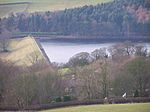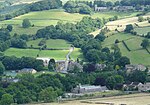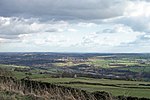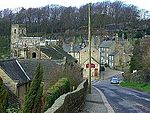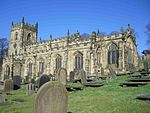Canyards Hills

Canyards Hills (grid reference SK250950) is a 64.1 hectare (158.4 acre) biological and geological site of Special Scientific Interest in South Yorkshire. The site was notified in 1990. This site possesses the most impressive examples in England and Wales of 'ridge-and-trough' or 'tumbled ground.' Beneath a 10 m high cliff, the north-facing valley side above Broomhead Reservoir and the hamlet of Wigtwizzle is a chaotic mass of sub-parallel ridges, separated by intervening narrow areas of marshy ground. The site is formed in Upper Carboniferous Millstone Grit and shows the most extreme form and best example of 'tumbled ground', with innumerable small Millstone Grit blocks (controlled by jointing) taking up a large landslip.
Excerpt from the Wikipedia article Canyards Hills (License: CC BY-SA 3.0, Authors, Images).Canyards Hills
Lee Lane, Sheffield Bradfield
Geographical coordinates (GPS) Address Nearby Places Show on map
Geographical coordinates (GPS)
| Latitude | Longitude |
|---|---|
| N 53.451358 ° | E -1.622751 ° |
Address
Lee Lane
Lee Lane
S6 6JN Sheffield, Bradfield
England, United Kingdom
Open on Google Maps


